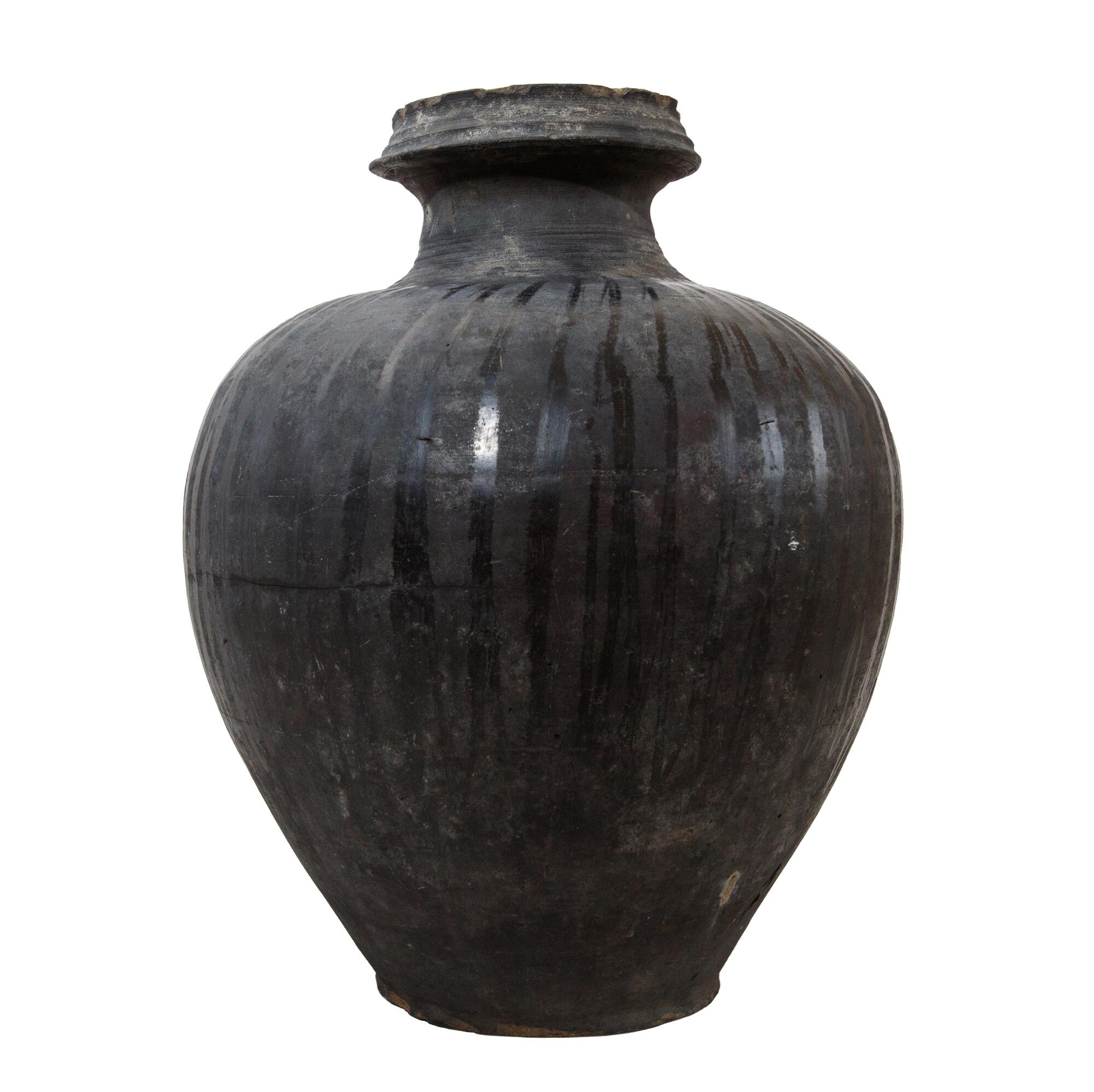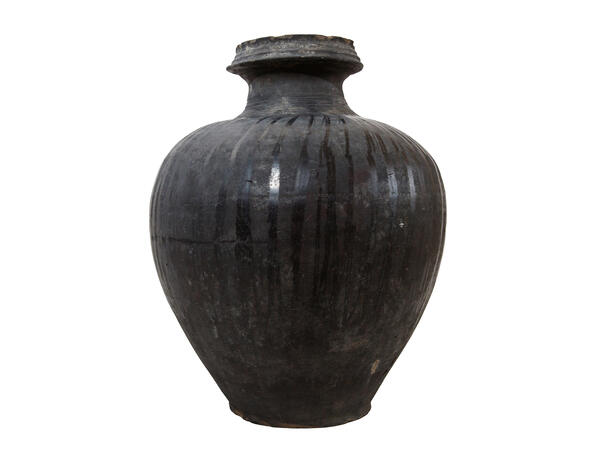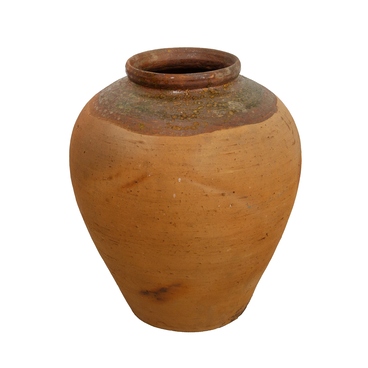The korchaga was donated to the museum by N. Korneev, a resident of the Nikolaevka worker’s settlement, in 2015. The pot was made in the village of Bolshoy Kazarinovo, Bolsheboldinsky district, Nizhny Novgorod region. The owner said that the pot was used in the family to store “pure”, traditional Mordovian ritual drink.
A korchaga is a large clay pot for storing food; it is dark graphite with an egg-shaped body, a wide bottom and a narrow throat. Its matte surface is decorated with intermittently applied vertical “glossy” stripes, darker than the background.
One of the most common decorative pottery techniques is called staining or blackening. Pottery made in this technique is easily recognizable: their color varies from dark brown to black with a silvery sheen. Such shades are given to them by the iron contained in the clay, which manifests itself with the help of restorative firing.
At a certain stage of firing, so-called reducing agents were added to the furnace — materials that emit a lot of smoke, for example, resinous fir firewood. The oven was walled up to block the access of oxygen. As a result, the crockery acquired an unusual “metallic” look, they were in great demand at fairs, including among the Mordovian citizens.
Mordvins willingly bought large pots — korchagas — for storing homemade brew — “pure”. Initially, this was the name of the oldest ritual drink, which was an obligatory component of sacrificial food during public prayers. Sacred pure was infused on honey with an admixture of perga — pollen of plants, laid in cells of honeycombs, filled with honey and preserved in rye malt and hops in small linden barrels.
At the end of the fermentation process, the pure was poured into earthenware pots. This method of storing drinks was known since ancient times. Clay allowed to preserve the taste and aroma of the liquid, and, most importantly, was the most affordable and cheap material for a peasant farm.
In the first decades of the 20th century, the use of pure lost its sacred significance. It turned into a festive low-alcohol drink made of boiled water, honey, yeast and hops, the recipe of which is passed down from generation to generation in every village.
By the middle of the 20th century, the Kazarinovsky pottery industry began to fade away. In the 1970s, they tried to revive it on the basis of the pottery workshop in the local collective farm. 5-6 craftsmen worked in the workshop on a permanent basis, and the products were transported throughout the district. However, in the early 1990s, the workshop was closed. In 2000, a Center for the Development of Pottery Art was opened in the city of Bogorodsk, Nizhny Novgorod region, whose masters revived the ancient staining technique in modern conditions.
A korchaga is a large clay pot for storing food; it is dark graphite with an egg-shaped body, a wide bottom and a narrow throat. Its matte surface is decorated with intermittently applied vertical “glossy” stripes, darker than the background.
One of the most common decorative pottery techniques is called staining or blackening. Pottery made in this technique is easily recognizable: their color varies from dark brown to black with a silvery sheen. Such shades are given to them by the iron contained in the clay, which manifests itself with the help of restorative firing.
At a certain stage of firing, so-called reducing agents were added to the furnace — materials that emit a lot of smoke, for example, resinous fir firewood. The oven was walled up to block the access of oxygen. As a result, the crockery acquired an unusual “metallic” look, they were in great demand at fairs, including among the Mordovian citizens.
Mordvins willingly bought large pots — korchagas — for storing homemade brew — “pure”. Initially, this was the name of the oldest ritual drink, which was an obligatory component of sacrificial food during public prayers. Sacred pure was infused on honey with an admixture of perga — pollen of plants, laid in cells of honeycombs, filled with honey and preserved in rye malt and hops in small linden barrels.
At the end of the fermentation process, the pure was poured into earthenware pots. This method of storing drinks was known since ancient times. Clay allowed to preserve the taste and aroma of the liquid, and, most importantly, was the most affordable and cheap material for a peasant farm.
In the first decades of the 20th century, the use of pure lost its sacred significance. It turned into a festive low-alcohol drink made of boiled water, honey, yeast and hops, the recipe of which is passed down from generation to generation in every village.
By the middle of the 20th century, the Kazarinovsky pottery industry began to fade away. In the 1970s, they tried to revive it on the basis of the pottery workshop in the local collective farm. 5-6 craftsmen worked in the workshop on a permanent basis, and the products were transported throughout the district. However, in the early 1990s, the workshop was closed. In 2000, a Center for the Development of Pottery Art was opened in the city of Bogorodsk, Nizhny Novgorod region, whose masters revived the ancient staining technique in modern conditions.



